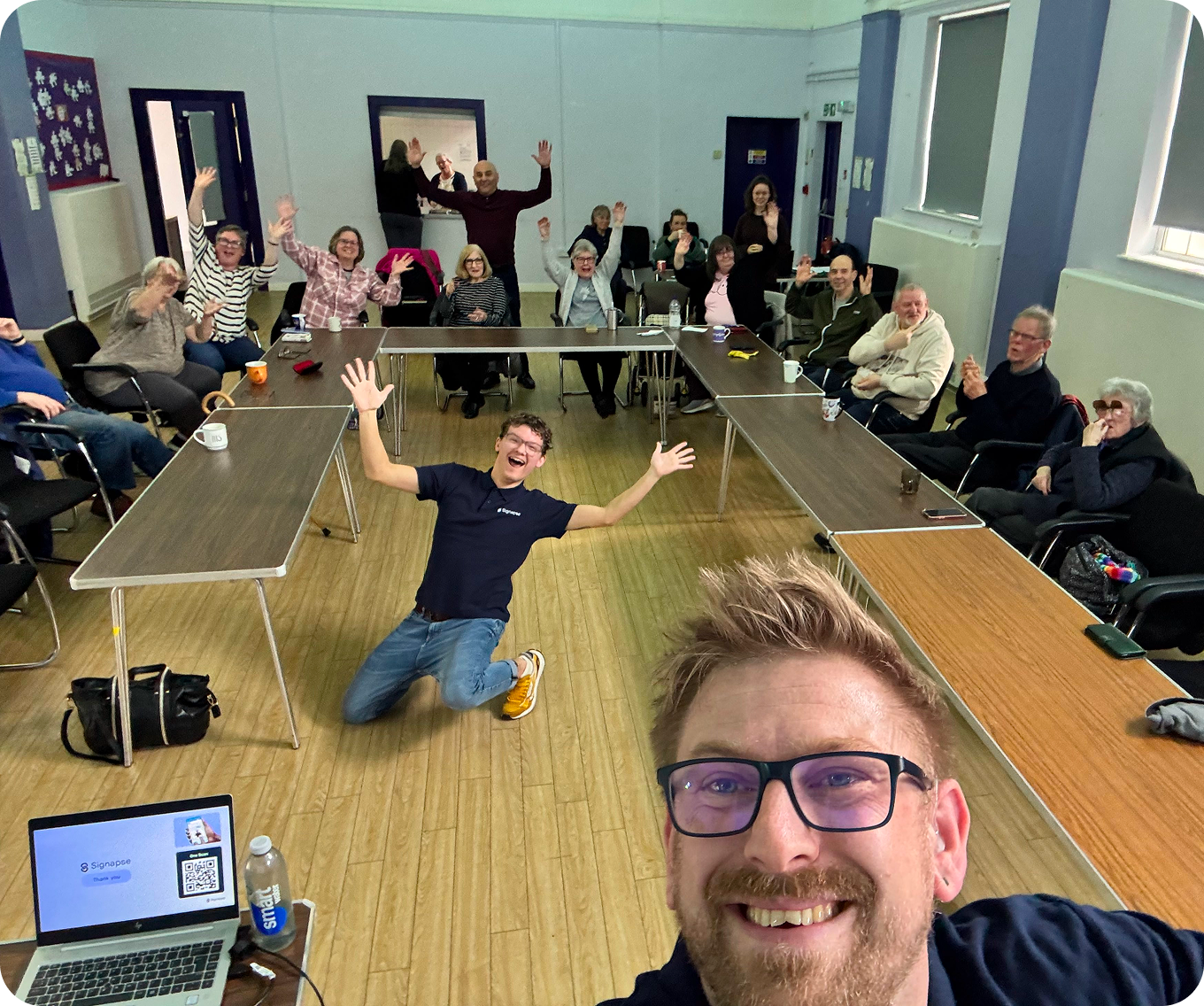What is the Difference Between Diversity and Inclusion?

A company can hire people from every background imaginable, but if those people don’t feel welcome, respected or heard, diversity alone won’t make a difference.
“Diversity and inclusion often go hand in hand” is a sentiment often echoed in modern workplaces. But, these two words mean very different things. Understanding that distinction is more than semantics; it’s foundational to building environments where everyone can thrive.
This guide delves into what diversity and inclusion really mean and how you can implement changes to make your workplace truly inclusive.
- Diversity: Who is in the Room
- Inclusion: How People Are Treated Once They’re in the Room
- Diversity vs Inclusion: Understanding the Difference
- Why Diversity and Inclusion Matter in the Workplace
- Practical Steps Toward Diversity and Inclusion in Your Workplace
- Common Misconceptions About Diversity and Inclusion
- How We Are Turning Representation Into Belonging
Diversity: Who is in the Room
Diversity refers to the presence of difference. In the context of a workplace, this means a variety of people who make up a group, team or organisation. It’s about representation: having people from different races, genders, abilities, sexual orientations, ages, socioeconomic backgrounds and life experiences.
But, diversity isn’t just what we can see. It includes invisible characteristics such as religion, education, neurodiversity and communication style.
For example, a diverse workplace might employ both Deaf and hearing staff, people of different nationalities and individuals from various socioeconomic or educational backgrounds. Each brings unique perspectives and insights that enrich team problem-solving and innovation.
Even within the Deaf community, there is a tremendous amount of diversity. From d/Deaf people who use sign language as their primary mode of communication to preferences of lipreading and written English, this range highlights that diversity exists even within identity groups. Everyone is different after all!
Key Point: Diversity is about who is in the room. It’s the mix of people, but not necessarily how well they interact or feel they belong.
What Do Studies Say?
Studies consistently show the value of diversity for business performance. McKinsey’s Diversity Wins report (2020) found that companies with the most diverse leadership teams were 36% more likely to outperform their peers financially. But as new research reminds us, diversity alone doesn’t guarantee fairness or belonging.
The 2024 RNID “It Does Matter” report found that while Deaf and hard-of-hearing people are increasingly present in workplaces, 25% of Deaf respondents and nearly half of British Sign Language (BSL) users reported negative attitudes from colleagues in the last year. More than half said they were regularly excluded from conversations and 39% said this exclusion damaged their confidence.
These findings underline that representation without respect isn’t progress. Diversity gets people through the door, but inclusion keeps them there.
Inclusion: How People Are Treated Once They’re in the Room
If diversity is the mix, inclusion is making that mix work. Inclusion is about creating an environment where everyone, regardless of background, ability or communication style, feels valued, respected and empowered to contribute. It’s the lived experience of fairness, belonging and accessibility.
For Deaf professionals, inclusion isn’t achieved by hiring alone. It requires communication access. In this case, inclusive technologies like sign language translation tools, qualified sign language interpreters, live captioning and visual alerts. It also requires a workplace culture where Deaf and hearing colleagues communicate openly and respectfully, without assumptions or exclusion.
An inclusive workplace ensures that all employees:
- Have access to information and participation
- Feel their voices are heard
- Can progress and thrive without barriers
Key Point: Inclusion is about how people are treated once they’re in the room. It’s about culture, access and belonging.
What Do Studies Say?
The 2024 Deloitte “Disability Inclusion at Work” report echoes this challenge. In its global survey of 10,000 disabled and neurodivergent professionals (including Deaf employees). 40% reported experiencing microaggressions, bullying or harassment in the previous year, while 44% said they couldn’t attend work events due to accessibility issues.
This data is striking: it shows that while workplaces are increasingly diverse, suitable accommodations are not being made, not because of intent but rather because structures, attitudes or logistics don’t support true inclusion.
What is Social Inclusion?
Social inclusion goes a step beyond general inclusion by focusing on ensuring that everyone, regardless of background, ability or circumstance, can participate fully in society. For the Deaf community, social inclusion means more than physical presence; it requires communication access, cultural understanding and equal opportunities in education, employment and public life. While inclusion promotes belonging within organisations or groups, social inclusion ensures Deaf people can engage freely and confidently in every aspect of daily life.
Diversity vs Inclusion: Understanding the Difference
Although diversity and inclusion are commonly linked to one another, they serve distinct purposes.
You can have diversity without inclusion. For instance, a company might hire Deaf employees but fail to provide sign language translation or captions in training videos, or include interpreters in meetings. Those employees are present but not fully participating.
Likewise, inclusion without diversity is limited. If everyone in the room share similar backgrounds or perspectives, inclusion efforts can be simple.
Both are essential. But, inclusion is what transforms diversity into impact.
Why Diversity and Inclusion Matter in the Workplace
Workplaces that embrace both diversity and inclusion are not only fairer but more effective. When employees feel valued and heard, they are more engaged, creative and loyal.
For Deaf professionals, true inclusion like accessible meetings, captioned communications and flexible tools, ensures that their insights can shape decisions. This benefits not just Deaf employees but entire teams, who gain from richer collaboration and empathy.
The Deloitte 2024 report shows that organisations with inclusive cultures are significantly more likely to retain disabled and neurodivergent talent, reducing turnover and recruitment costs. Similarly, inclusive companies attract younger workers who increasingly prioritise purpose and belonging over pay alone.
Inclusion makes diversity sustainable. It’s not just a tick-box exercise!
Practical Steps Toward Diversity and Inclusion in Your Workplace
Building a diverse and inclusive workplace takes ongoing effort and leadership commitment. Here are some evidence-backed actions organisations can take:
1. Review Hiring Practices
- Use inclusive, bias-free job descriptions
- Offer interpreters or relay services for Deaf applicants
- Value varied career paths and skills, not just traditional credentials
2. Invest in Accessibility
- Caption all videos and virtual meetings
- Provide qualified interpreters for training, reviews and events
- Use sign language translation tools where appropriate to translate documents and videos
3. Educate and Train for Inclusion
- Offer training in inclusive communication and Deaf awareness
- Encourage employees to learn about BSL and Deaf culture
- Address unconscious bias, especially around disability and communication differences
4. Foster Inclusive Leadership
- Leaders should model inclusive behaviour such as active listening, inviting contributors and ensuring accessibility
- Celebrate diverse success stories and role models, including Deaf and disabled professionals
5. Measure and Evolve
- Track diversity metrics (representation) and inclusion metrics (belonging, engagement, access)
- Act on feedback transparently and regularly
The 2024 Hays DE&I Report highlights growing progress in making workplaces more inclusive. 42% of UK organisations now have a dedicated DE&I department, with nearly half of those having full teams or leaders focused on inclusion strategy. This marks a shift from diversity as an “HR initiative” to a core part of business strategy. However, there is still a large portion of organisations that lack formal DE&I resources, showing how much room there is for growth.
Common Misconceptions About Diversity and Inclusion
The prioritisation of DEI principles have grown in the last few years. But, there are still misconceptions that prevent us from reaching a fully inclusive society. Let’s bust some myths:
- “Hiring more diverse people means you’re inclusive”: In reality, representation is just the first step. Without equitable systems and accessible communication, diversity can become tokenism.
- “Inclusion means everyone agrees”: Inclusion doesn’t mean everyone should think the same! It is about respecting different views and accepting that disagreement can be healthy but exclusion cannot.
- “Diversity is only about race and gender”: True diversity includes disability, language, socioeconomic status and more. The Deaf community’s experiences highlight how easily accessibility and communication diversity are overlooked.
How We Are Turning Representation Into Belonging
Diversity and inclusion are not interchangeable, but they are inseparable.
At Signapse, we believe in leading by example. We don’t just talk about accessibility and inclusion, we live it every day. Our team brings together Deaf and hearing professionals from a wide range of backgrounds, working toward one goal: creating technology that removes barriers and makes public life more accessible for everyone.
With our products, you can make communication in your workplace truly inclusive. SignStudio translates pre-recorded content, SignStream supports live videos translation and our Transport product makes travel smoother and more accessible for all.
We’re passionate about building inclusion into every aspect of life and we invite you to join us. Book a demo today and see how Signapse can help you make accessibility a reality.
FAQs
What’s the main difference between diversity and inclusion?
Diversity is about representation. This means the mix of people in a workplace or community. Inclusion is about culture, ensuring everyone feels valued, respected and able to contribute fully.
Why is inclusion so important in diverse workplaces?
Without inclusion, diversity can lead to tokenism or disengagement. Inclusion ensures that everyone’s perspectives are heard and that differences strengthen, rather than divide, the team.
How does inclusion affect Deaf employees in the workplace?
For Deaf professionals, inclusion means accessible communication. Interpreters, sign language translated content, captions and visual alerts are steps that can be made for a more inclusive workplace.
Related Articles
Bridging the Communication Gap for Deaf Individuals at Work
The Importance of Accessible Sign Language in Public Spaces
Facilitating ADA Compliance: How Signapse Simplifies Accessibility for Organisations



